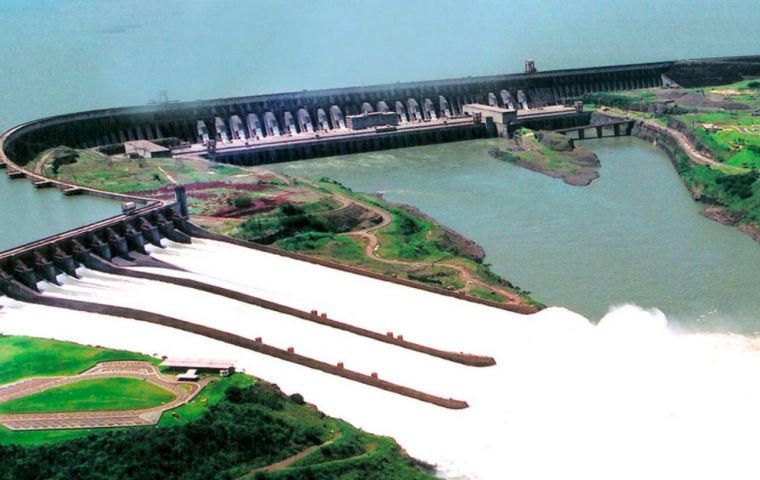MercoPress. South Atlantic News Agency
Itaipú dam generates more power to help Paraguayan barges with soybeans reach the River Plate
 The Itaipu bi-national dam in the heart of South America is the largest operational of its kind in the world
The Itaipu bi-national dam in the heart of South America is the largest operational of its kind in the world Just over two months after completing a special outflow to increase the level of the drought-stricken Paraná River, the world largest operational hydroelectric dam, Itaipu, located on the border of Brazil with Paraguay, will increase energy production to help sailing along the huge South American water artery.
More power, equivalent to a geater outflow should allow Paraguay and Argentina further south to use the waterway to export around 100,000 tons of soybeans that are currently parked at warehouses and on barges, waiting to go abroad.
The request for the binational Itaipu dam to have a greater water outflow was made by the Paraguayan forieng ministry to the Brazilian government, with participation from the Ministry of Mines and Energy, Eletrobras, the National Water Agency, and the operator of the National Electricity System.
This time however will not need to open the spillway, as in the last occasion but rather increase power production, which will be enough to have more turbine water flowing downstream.
The program started this Monday and should extend until August 16th, totaling 13 days. From Monday to Friday there will be 7,500 cubic meters of water per second (m³ / s). On weekends it will fall slightly to 7,100 m³ / s, overall an increase of 1,000 m³ / s in relation to the current volume.
A similar situation is scheduled for the Yaciretá hydroelectric dam, shared between Argentina and Paraguay. This should make it easier for 104 loaded barges which are waiting for the river level to rise by spilling over the lock of the binational Yacyretá plant, which is also participating in the coordinated effort.
The passage of barges through the Yacyreta lock is scheduled to take place between August 10-12, according to the Paraguayan Ministry of Foreign Affairs.
A first operation carried out by the Itaipu plant, took place between May 18 and 29, with a controlled opening of the spillway, increased the level of the Paraná River by three meters, allowing the handling of 170 barges loaded with soybeans retained due to the strong drought. The measure allowed the flow and access to Argentine and Uruguayan ports of the Paraguayan oilseed.




Top Comments
Disclaimer & comment rulesCommenting for this story is now closed.
If you have a Facebook account, become a fan and comment on our Facebook Page!